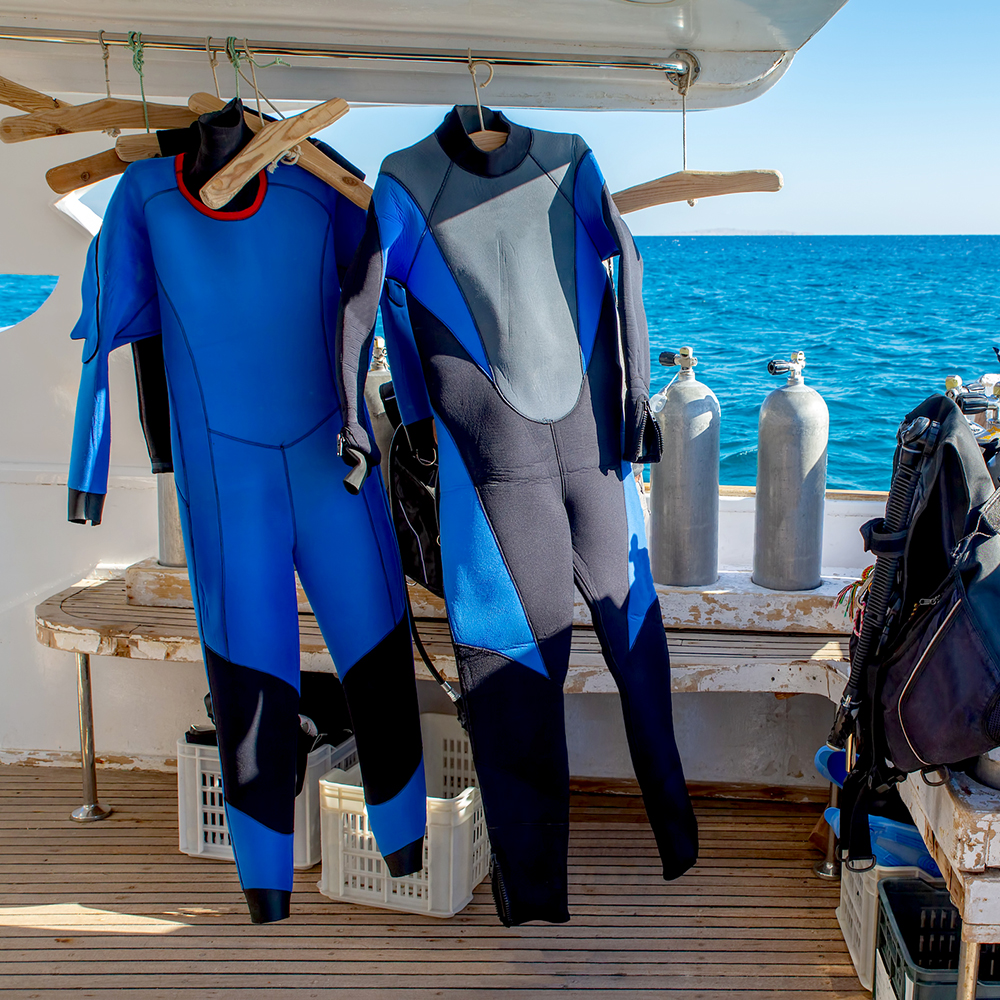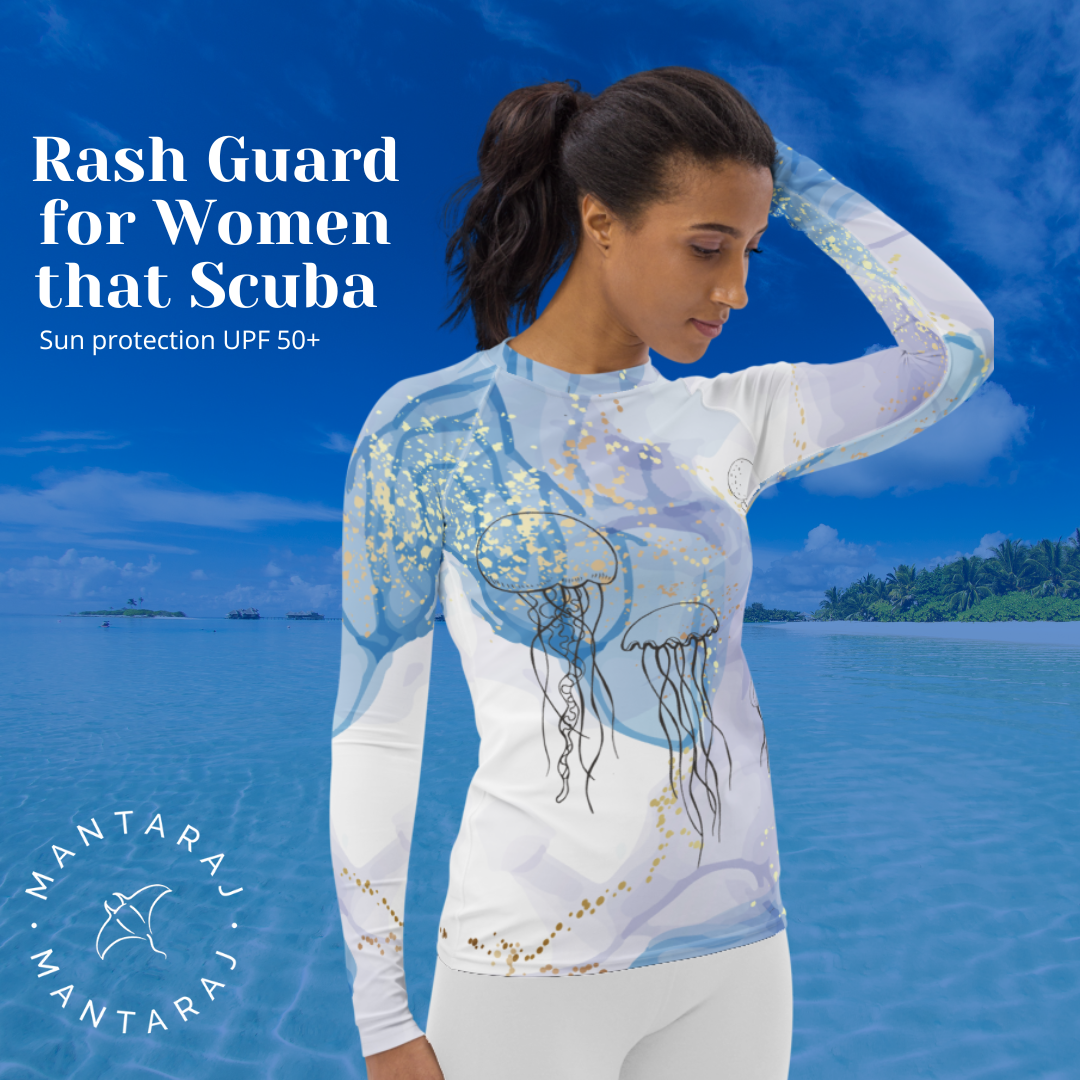A scuba diving wetsuit temperature guide can be a valuable resource for divers, helping them choose the right wetsuit thickness based on the water temperature at their chosen dive location. Here’s a general wetsuit temperature guide:
1. Tropical Waters (25°C/77°F and Above):
-
- Recommended Wetsuit Thickness: 1mm to 3mm (Shorty or Springsuit)
-
- Additional Considerations: In very warm tropical waters, some divers may choose to dive with a rash guard or without a wetsuit for maximum comfort. We recommend rash guards and leggings from Mantaraj, where you can find beautiful rash guards for women and unique water sport clothing for men.
2. Warm Waters (18°C-24°C/64°F-75°F):
-
- Recommended Wetsuit Thickness: 3mm to 5mm (Full Suit)
-
- Additional Considerations: In the higher end of this temperature range, a 3mm wetsuit is suitable, while a 5mm wetsuit is preferable for the cooler end.
3. Temperate Waters (10°C-17°C/50°F-63°F):
-
- Recommended Wetsuit Thickness: 5mm to 7mm (Full Suit)
-
- Additional Considerations: Divers in temperate waters should also consider wearing gloves, hoods, and possibly boots for added warmth.
4. Cold Waters (10°C and Below/50°F and Below):
- Recommended Wetsuit Thickness: 7mm to 8mm (Full Suit) with Hood, Gloves, and Boots
5. Wetsuit guidline for diving in the Red Sea
The Red Sea is a popular scuba diving destination known for its warm and clear waters. The water temperature in the Red Sea can vary somewhat depending on the season and the specific location within the region, but in general, it falls into the category of warm water diving.
Red Sea typically has water temperatures ranging from 23°C to 28°C (73°F to 82°F) or even higher during the summer months, a 3mm to 5mm wetsuit is usually suitable.
-
A 3mm wetsuit or a shorty (short wetsuit) is typically adequate for diving in the Red Sea during the warmer months, especially in the summer when water temperatures are at their highest, from June to September.
-
A 5mm wetsuit is a good choice if you plan to dive in the Red Sea during the pre or post summer months or if you tend to get cold easily. From April to June and from October to December. It can be quite windy so bring something warm to wear between the dives.
-
A 7mm wetsuit or dry suit is a good choice if you plan to dive in the Red Sea during the cooler months or if you tend to get cold easily. The temperature is low from January to April, before it starts to warm up again. A 7mm wetsuit or dry suit provides a bit more thermal insulation and is suitable for slightly cooler water temperatures.
Keep in mind that personal comfort and cold tolerance can vary, so some divers may prefer a slightly thicker wetsuit, especially for longer dives or night dives when temperatures might drop a bit. It’s a good idea to check the current water temperatures for your specific dive location before making your final decision on wetsuit thickness. Additionally, consider the duration of your dives and whether you’ll be doing multiple dives in a day, as this can also impact your thermal needs.
This is a general guideline, and there can be variations in water temperature even within the same region due to factors such as season, depth, and currents. Always check the specific water temperatures at your dive destination and consult with local dive experts or instructors for the most accurate recommendations on wetsuit thickness and accessories.
It’s essential to choose a wetsuit that provides adequate thermal protection while allowing you to maintain flexibility and comfort underwater. Wearing the right wetsuit for the conditions ensures an enjoyable and safe diving experience.


